$0 to $100,000 Trading Rule: That Most Traders Get Wrong
Would you do me another favor? By the end of this video, I can prove that the way you are trading right now is most likely wrong. But to prove that, I want you to look at these three back-testing clips, while I tell you a short story about how Warren Buffett made money when he was young. By the end of the story, these three back-testing clips will have the exact same win rate and will have risked 1% of the account per trade, and still, one of them will make way more money than the others. I want you to guess why one of them is making more money than the others because if you can correctly guess that, you will understand what Warren Buffett and these three clips have in common.
See, before Warren Buffett started to make his billions, one of the businesses he ran involved setting up pinball machines in barber shops. Many times people have to wait in line before they can get their hair done, which can be quite boring. Young Buffett saw a business opportunity in this. In 1946, Buffett and his friend Danley bought a pinball machine for 25 dollars and installed it in a barber shop. Now, instead of getting bored, customers can play pinball while they wait. This business was a hit from day one. The first night, Buffett and Danley made 4 dollars, and after one week, they had already made 25 dollars in total. They reinvested this amount into the business, bought another pinball machine, and installed it in another barber shop. Then, the profit made from two machines was reinvested to buy 2 more machines. 2 machines became 4, 4 became 8, and so on. They kept reinvesting the profit, and soon, Buffett had pinball machines in barber shops all over Washington, D.C.
Young Buffett ended up selling the business, which he started with just 25 dollars, for over 1000 dollars after a year.
This story and the 3 back-testing clips have one thing in common: the reinvesting part, and that’s also the part most people get wrong.
Recently, one of the members of the Trading Rush Discord Server asked: “how often is reinvesting profits recommended?”. Since I personally reinvest, or in other words, compound whenever I’m approximately 30% in profit, that’s what I replied. But then I remembered the Turtle Traders and their trading rules, and started to question if my method of compounding was even right?
You see, in the previous episode, we saw how multi-millionaire Richard Dennis taught random traders how to make millions. These random traders were called turtle traders and they together ended up making more than 175 million in around 5 years. One of the rules they followed was “risking only 2% of the account size on a single trade”, which doesn’t sound any different than the risk management rule most traders use today. However, if there was a 10% profit in the account, they were told to reinvest the profit, and risk 2% of the new total account size. Furthermore, if there was a 10% loss, they were told to risk 2% of the new smaller account size.
See, in my compounding method, I am reinvesting the profit when I am up 30%. Furthermore, I’m adjusting my position size so that the risk per trade is 1 to 2% of the new and bigger account size. If I lose 30%, I’m not changing anything. But in Richard Dennis’s compounding method, he is not only reinvesting and adjusting the position size when he is in profit, but he is also reducing the position size when the account size gets smaller. Which method of compounding is right? Which one makes more money? And does reducing the position size when there is a loss even make sense?
To find out, I ran 5 experiments, took 600 trades, and simulated 9000 trades. The data you are about to see is not only surprising, but you will most likely end up using the best compounding method we have found.
In the first experiment, we will test if reducing the position size when there is a loss is a good move or not. Here, I have the probability section of the Official Trading Rush App. On one side, we will simulate 1000 trades with no adjustment to position size when there is a loss. For example, we will risk 1% per trade, and if there is a loss, we will still risk 1% of the initial capital. On the other side, we will simulate 1000 trades, but this time we will reduce the position size when there is a loss. For example, if the account gets smaller, we will risk 1% of the current capital, and not 1% of the initial capital.
To make sure there will be more losing trades in the experiment, I used a 30% win rate and a 1.5 to 1 reward risk ratio.
As soon as I started the simulation, the account balances of these two accounts started to fall like it was a market crash. By the 400th trade, the first account that didn’t use any adjustment methods and risked the same amount every trade, blew up the account. On the other hand, the second account where the position size was reduced when there was a loss, didn’t blow up the account even after 1000 trades. Furthermore, at the 400th trade, the second account still had 40% of the initial capital left. The 1st experiment shows us that reducing the position size when there is a loss and when the account gets smaller is actually a good thing.
But what if your win rate is good? Let’s say your win rate is good like 55% and you are pretty confident in what you are doing. Then what? Will reducing the position size when there is a loss even make sense since we are not going to lose money in the long run? To find out, I simulated 1000 trades with a 55 percent approximate win rate on two separate accounts. The first account will compound when there is a profit, but will not reduce the position size when there is a loss. On the other hand, the second account will compound when there is a profit, but will also reduce the position size when there is a loss.
As soon as I started the simulation, the account balances of these two accounts started to move in the upward direction. And after 1000 trades, the first account was up by approximately 3000%. What’s interesting is that the second account was also up by approximately 3000%. The second account however was slightly better than the first one. What this means is, reducing the position size when there is a loss won’t make a big difference in the long run if the win-rate is good, but since it significantly reduces the probability of making a big loss and blowing up the account in the short term, it is a better idea to reduce the position size when there is a loss and the account size gets smaller, just like the multi-millionaire Richard Dennis recommended to Turtle Traders.
In the second experiment, to find the best compounding method, I opened the Trading Rush Website, selected the trading strategy that got the highest TR Score as well as the highest win rate after 100 trades. Then, I took 100 trades again on the exact same market structure 3 times. The First time, I didn’t use any compounding method. The second time, I compounded when there was a 10% profit, and reduced the position size when there was a 10% loss. The third time, I compounded every time there was a profit and reduced the position size every time there was a loss.
In this experiment, the account with no compounding or adjustment method made 55% profit. The account that compounded and adjusted the position size at 10% change made 68% profit. And the account that compounded and adjusted the position size after every trade, made 71% profit.
In other words, with the highest win rate trading strategy, compounding and adjusting the position size after every trade was the best compounding method. But what if, the results were too good because of the high win rate strategy?
To make sure the data is correct, in the 3rd experiment I used the worst trading strategy we have ever tested 100 times. This strategy after 100 trades got a 33 percent approximate win rate with a 1.5 to 1 reward risk ratio. Since the win rate is so low, all three adjustment methods in the third experiment should make a loss. But, if our previous data is correct, and compounding and adjusting position size after every trade is actually the best method, then the same method should also make the lowest amount of loss with a bad strategy. And in the third experiment, it did.
The account with no adjustment method made the highest amount of loss. The account that compounded and adjusted the position size at 10% change had a slightly lower loss. And the account that compounded and adjusted the position size after every trade had the lowest amount of loss.
After looking at all of this data, we can safely say that we have found the best compounding and adjustment method, but unfortunately, not everyone has the same win rate in trading. The win rate in trading also depends on your Market View, on how good you are at identifying the good vs bad markets. I have shared how to identify the good vs bad markets in the Trading Rush Price Action Series, but let’s see how compounding and adjusting the position size at every trade would look like with a 50% win rate. A 50% win rate is fairly easy to achieve. Even the Trade Alerts I gave on Patreon had a higher win rate than this.
In the fourth experiment, I simulated 1000 trades with no compounding on one side, and 1000 trades with compounding and adjustment after every trade on the other side. In the end, the account with no compounding was only up by 260%, whereas the account with compounding plus adjustment after every trade was up by 1300%. Even with a 50% win rate, compounding and adjusting position size after every trade made a big difference in the long run.
But what if your win rate is even worse? Let’s say you are an absolute beginner and are getting a win rate just above breakeven. With a 1.5 to 1 Reward Risk Ratio, the breakeven win rate is 40%. So in the fifth experiment let’s see if compounding and adjusting after every trade will even work when the win rate is just above breakeven, something like 45%.
With no compounding, the first account was only up by 140%, whereas the second account with compounding and adjustment after every trade was up by 350%. There is clearly a big difference.
Till now, I have been compounding around 30% profit without making any adjustment to the position size when there is a loss. But after 5 experiments, we have enough data that says compounding and adjusting position size after every trade is not only better but adjusting position size when there is a loss significantly reduces the probability of blowing up the account. So I will change my compounding method as well.
That’s all! I hope you learned something. Get trade alerts, see how I take high probability trades by supporting Trading Rush on Patreon. Thanks for watching.

